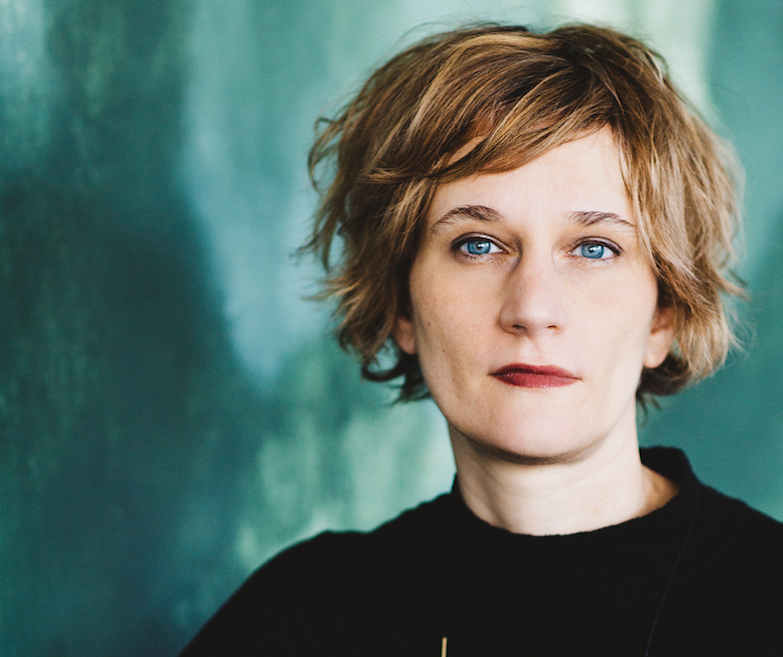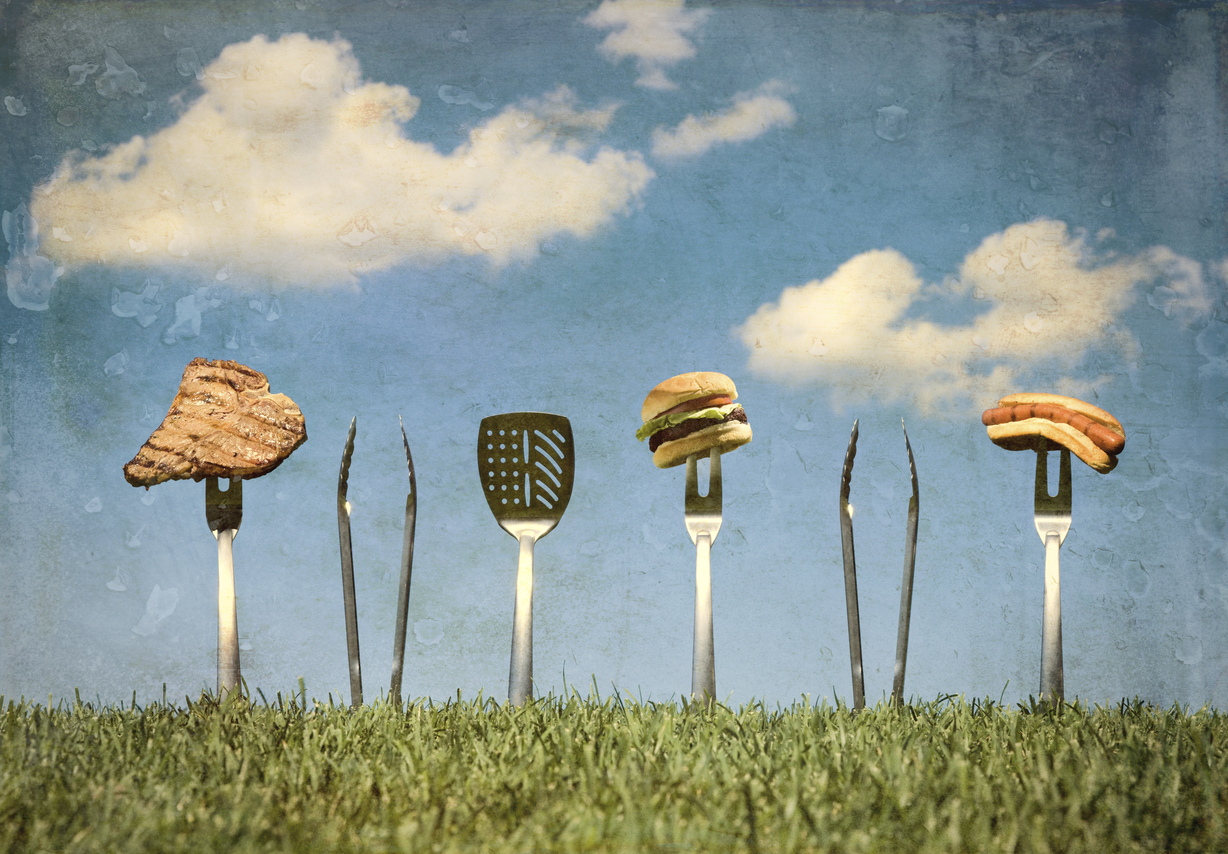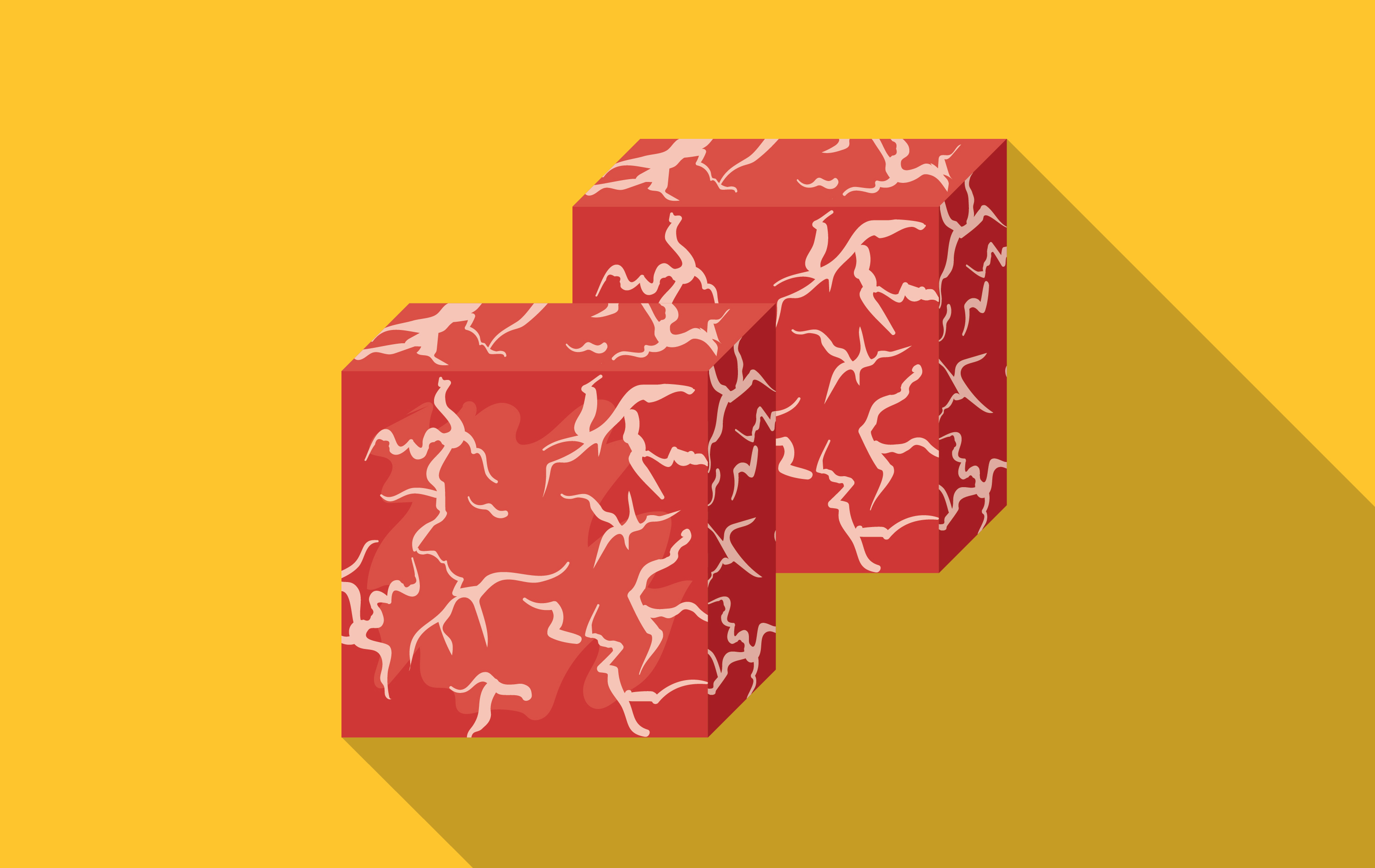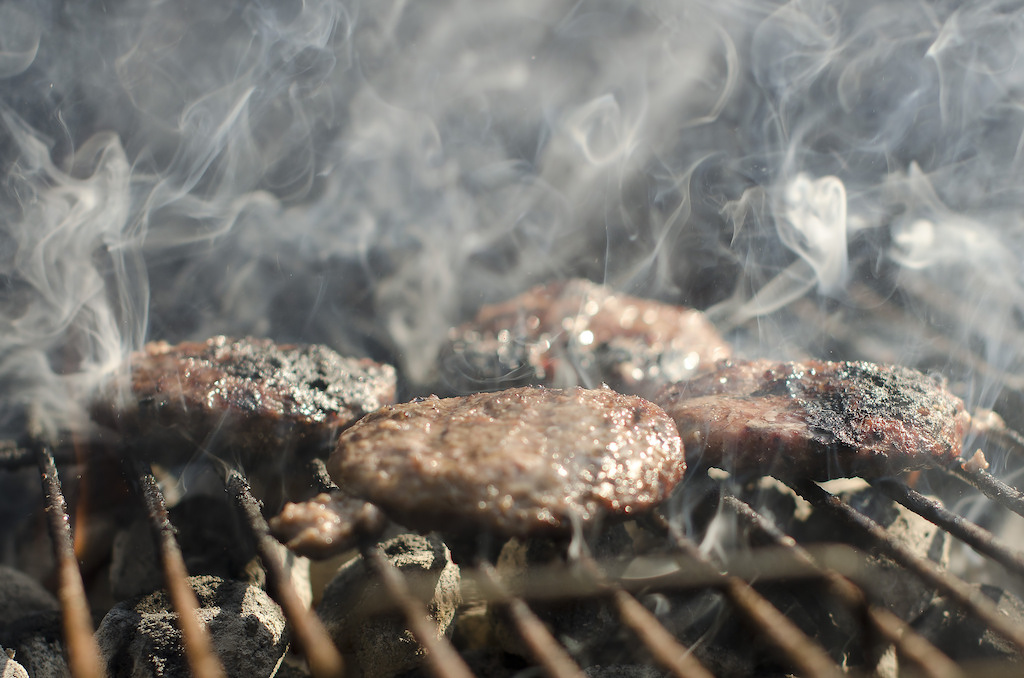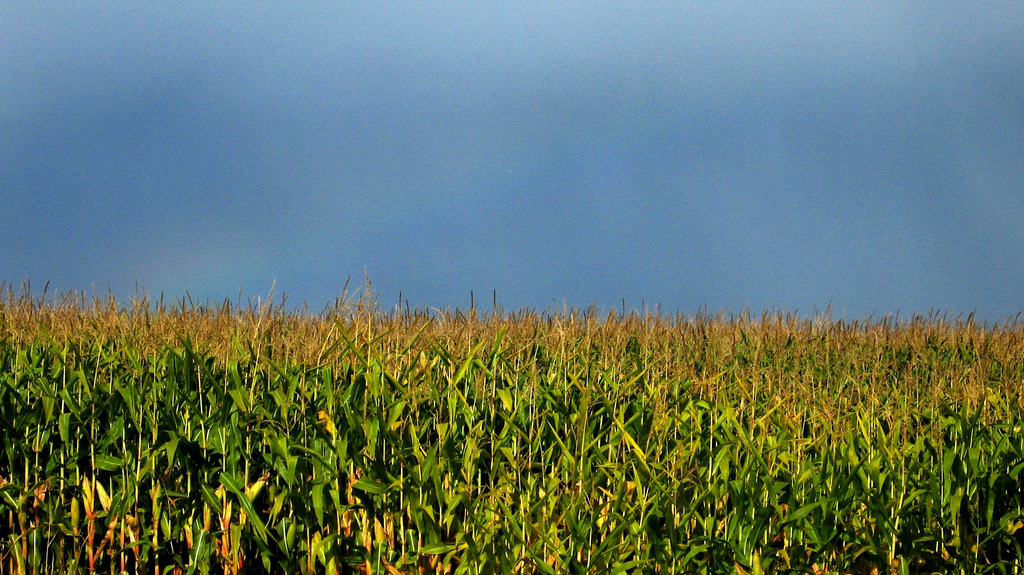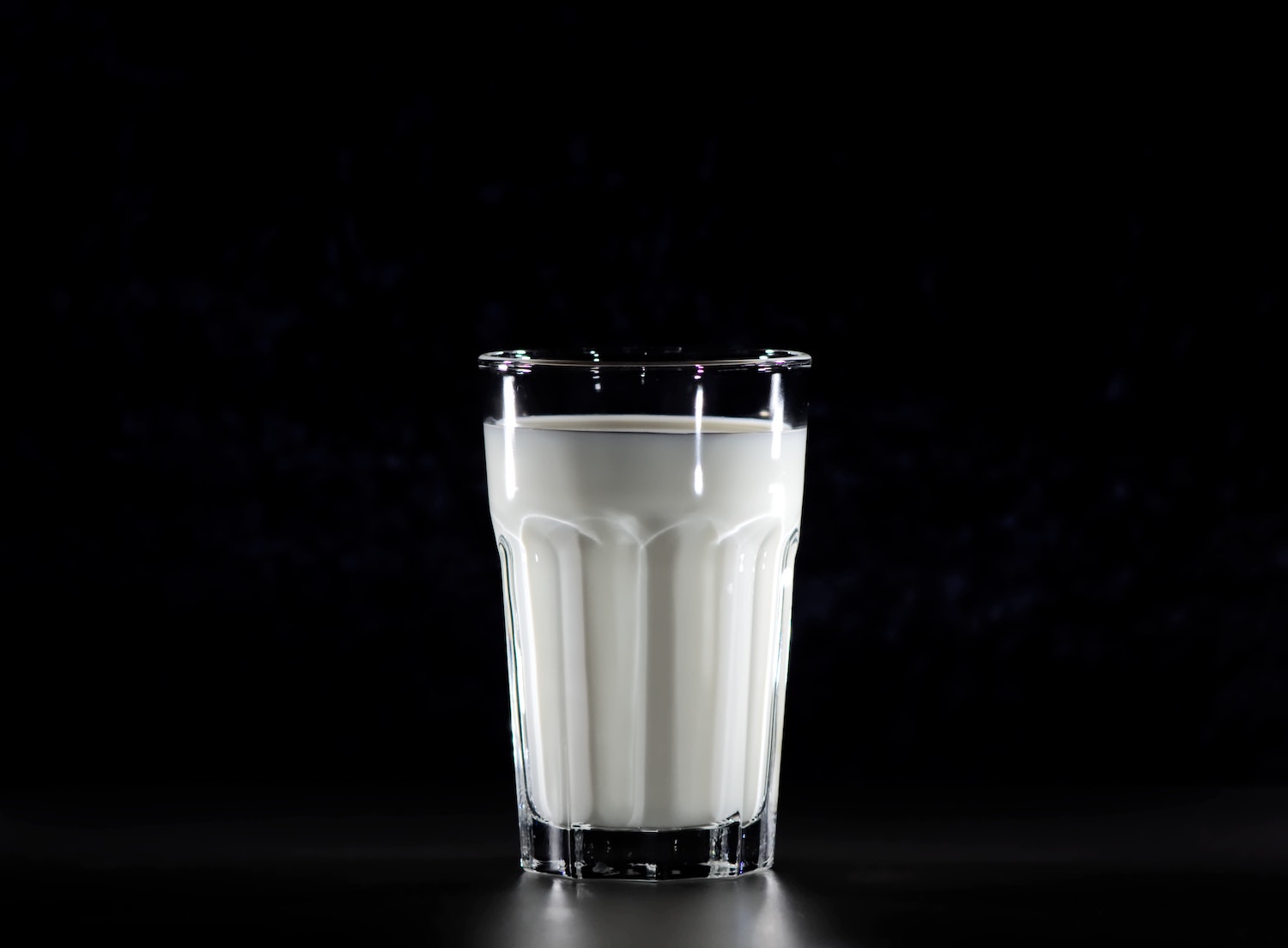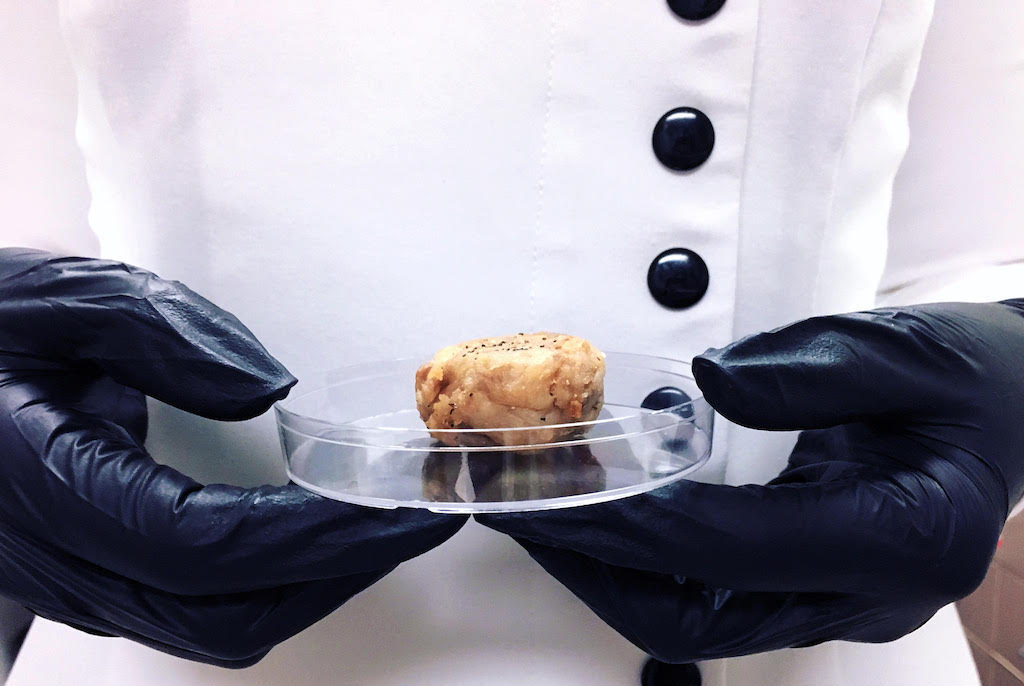
Marie Gibbons
I’m videochatting with Dr. Glenn Gaudette at his biomedical engineering laboratory at the Worcester Polytechnic Institute in Massachusetts, when he swings the camera around to show me his lab’s pride and joy. Ghost-like spinach leaves hang dripping in individual plexiglass chambers. Each one is connected by its stem to something that looks like an IV needle, a syringe that slowly infuses it with detergents, rinsing away its living cells and leaving behind only the vacant cell walls. One day, Gaudette hopes, these decellularized leaves will form the scaffolds for living human heart tissue, a “green” technology for patching damaged hearts.
These spinach leaves aren’t just a potential biomedical breakthrough. They may also hold a clue to solving one of the biggest remaining hurdles in the race to create truly meat-like lab-grown meat. Drawing on the techniques developed in Gaudette’s lab and other related work in the field of regenerative medicine, researchers are attempting to mimic the flavor, form, and texture of meat by growing animal cells on decellularized plants—not just spinach, but celery, artichoke, mushrooms, and jackfruit.
Venture-backed lab-grown meat companies—including Memphis Meats, Mosa Meat, Just Inc., and Finless Foods—have spent hundreds of millions of dollars learning to cultivate cow, chicken, pig, and fish cells in specialized vats known as bioreactors. The hope is that one day, they’ll be able to grow animal cells at a large enough scale to provide a competitively priced, less resource-intensive alternative to traditional stockyards, factory farms, and fisheries. Although many questions remain unanswered—including what exactly to call these foods— it’s almost certain that if and when the first generation of motherless meats arrive in grocery stores, they will not be steaks, chops, or filets. They will be meatballs, sausages, and extruded nuggets—processed foods that combine laboratory-raised cells with plant proteins, grains, and other ingredients.
 Worcester Polytechnic Institute
Worcester Polytechnic Institute Researchers are “decellularizing” spinach and other fruits and vegetables in the hopes of filling their structures with animal cells to make a new kind of cultured meat
This is because cultured meat research has, up until this point, operated largely in the realm of the two-dimensional—growing animal cells, rather than simulating entire animal tissues. When we eat meat, what we’re really doing is consuming muscle tissue, an organized community of cells that includes not only skeletal muscle cells, but also fat cells, collagen, nerves, blood, and blood vessels. This supporting structure of sinew and vasculature is what produces the full sensory experience of meat, and is the difference between a muscle-cell slurry and a steak.
But growing three-dimensional meat is a challenge. Typically, animal cells must be within 200 microns from a nutrient supply in order to survive; that’s about the width of a human hair. This is known as the diffusion limit, and it’s why you see cells growing along only the surface of a petri dish, rather than in heaps and piles. In living animal bodies, an extracellular matrix of collagen supports the development growth of complex muscle tissues.
“It’s literally the scaffold that positions cells in a particular pattern within tissues, that allows them to mature and become functional in a tissue-specific manner,” says Jessica Krieger, a PhD student in biomedical sciences at Kent State University in Ohio. Krueger has worked on tissue engineering in both regenerative medicine and cultured meat laboratories. To build muscle tissues without a body, researchers must develop their own scaffolds.
 Daniel Modulevsky
Daniel Modulevsky Photographed here is a cross-section image of blood vessels in a collagen matrix, a structure that supports the development growth of complex muscle tissues. One way that scientists are trying to replicate that for lab-grown meats is by hijacking plant-based structures and coopting them into approximating animal functions
One approach is to create custom-made scaffolds “from scratch,” using tools either from chemical and bioengineering to rig up nano-structures from synthetic polymers such as PLGA, or from naturally occurring materials, including bacterially produced collagen and cellulose, carrageenan, zein (a corn protein), silk, and alginate. Although this can be technically difficult, it remains the most common strategy.
Plant-based scaffolds represent another approach, one that has recently begun to gain more attention. You can think of them as botanical ready-mades—“found” scaffolds that do not need to be built entirely from scratch. This makes them much more affordable to work with than engineered bioscaffolds. New Harvest, a New York City-based nonprofit promoting research in cellular agriculture, currently funds a fellowship to advance this field of study. (Full disclosure: I was a speaker at the New Harvest 2018 conference, though otherwise have no connection to the organization.)
Andrew Pelling’s augmented biology laboratory at the University of Ottawa in Canada is one recipient of New Harvest funding. His lab has been tinkering with plant-derived scaffolding since 2011, and has succeeded in growing human skin cells on decellularized apples carved into the shape of ears. I ask Pelling where he first got the idea.
 Bonnie Findley
Bonnie Findley Scientist Andrew Pelling’s lab has succesfully harnessed the idea of decellularizing plants for animal cells. Here, human skin cells are growing on an apple carved into the shape of an ear
“Have you ever seen Little Shop of Horrors?” he replies. The cult-classic 1986 musical comedy features a mouthy plant named Audrey II, who feeds on blood. “She was an interesting biological entity,” Pelling laughs, “part plant, part animal. Could we grow Audrey II? That was our goal at the time. We failed at making Audrey II, but we did come up with a somewhat new approach to scaffolding material.” Their inadvertent discovery: a new way of using plant-derived cellulose for animal tissue engineering.
To be clear, Pelling and other scientists are not creating plant-animal chimeras like Audrey II, uncanny beings that intermingle the DNA of plant and animal kingdoms. The plants’ DNA and all the other stuff inside its living cells get washed away by detergents and solvents during the decellularization process. But the remaining husks of evacuated cell walls, largely composed of cellulose, remain more or less intact—becoming, in theory, a vessel to fill with meat.
 Ryan Lash / TED
Ryan Lash / TED Andrew Pelling at a 2016 TED talk in Vancouver, Canada
The trick, then, is to hijack the natural formations of leaves, fruits, and stalk, and co-opt them into approximating animal functions. Gaudette’s tissue engineering laboratory began its work with spinach because the dense network of fine veins resemble the vasculature of the human heart. Parsley stems have been tested as scaffolds for blood vessels; bamboo for bone grafts. His lab recently began working with decellularized broccoli florets; their shape echoes the alveoli within human lungs.
Cultured meat researchers also look for structural rhymes between plant and animal kingdoms. Last year, when she worked in Pelling’s lab, Krieger began working with decellularized celery stalks, hoping to persuade muscle cells to organize themselves as they do in living bodies. “In the body, you have these elongated muscle fibers that are arranged in parallel in muscle tissue,” she explains. “If we could fill the celery channels with [growing] muscle cells, we would have essentially the same tissue structure.”
Unlike their peers in regenerative medicine, cultured meat researchers have to consider flavor as well as function. Marie Gibbons, a graduate student working in George Church’s lab at Harvard Medical School in Boston, Massachusetts, has successfully cultured turkey muscle cells on artichoke and jackfruit. “They have a very similar appearance, and very similar texture to meat,” she says. Jackfruit, in particular, which is already commonly eaten as vegetarian meat substitute, can enhance the overall impression of meatiness. In Pelling’s lab, graduate student Santiago Campuzano is continuing Krieger’s work with celery, and also culturing meat in decellularized mushrooms, chosen for their textural resemblance to pulled pork.
Yet here, too, is an opportunity for innovation. Gaudette talks about collaborating with botanists to develop specialized varietals—veinier spinach leaves, for instance. Plants could also be genetically engineered to increase their suitability for scaffolding, for instance, by introducing genes for proteins that would facilitate animal cell binding and growth.
 Worcester Polytechnic Institute
Worcester Polytechnic Institute Dr. Glenn Gaudette’s lab is trying to “hijack” the natural formations of leaves, fruits, and stalks, and co-opt them into approximating animal functions. Here, a spinach leaf is being decellularized for its scaffolding, which will then be filled with animal cells
This would be welcome. In animals, the extracellular matrix is largely made of collagen; muscle cells thrive most enthusiastically on this material. A major ongoing challenge for researchers working on plant-based scaffolds is coaxing animal cells to penetrate—the technical term is “perfuse”—the matrix of cellulose plant walls, and fill out the empty spaces rather than clinging to the edges. That’s one problem that Campuzano, in Pelling’s lab, is currently working to solve.
I wonder if Pelling and Campuzano have sampled the meat-shrooms and celery-meat they’ve been sowing in Ottawa. “Have you tried any of these?” I ask, “Can you describe what they taste like?”
There’s a long pause, and then Pelling and Campuzano begin to set me straight. First of all, their lab is not working with cells from cows, chickens, or other ready-to-eat animals. They’re using an immortalized mouse-stem-cell line—“a very good model for skeletal muscle research,” Campuzano tells me—as they work out the fundamentals of the technique.
 Alexis Williams
Alexis Williams To be clear: Pelling and other scientists are not creating plant-animal chimeras. The plants’ DNA and all the other stuff inside its living cells get washed away, and the remaining husks of evacuated cell walls become a vessel to fill with meat
In other words, the meat growing in Pelling’s lab is not really edible—and not just because a mush-mouse burger isn’t all that appetizing. The process of decellularizing plants and culturing cells involves compounds whose safety hasn’t been established, and which may in fact pose a risk to human health—detergents, antibiotics, antifungals. “I would never want my students risking their health and safety,” Pelling says. “Those sorts of violations are exactly the kind of thing that would get my lab shut down.”
But Gibbons, whose experimental protocol did not include detergents or antibiotics, has sampled her turkey-jackfruit creation, which she affectionately calls a “nug.”
“It tasted a lot like a chicken nugget,” she assured me, though she also admitted that she might not be the best person to make that call. She’s been vegan for five years and vegetarian for longer than that. “The important thing is that it didn’t taste like jackfruit,” she says. “It definitely tasted meaty.”
 Marie Gibbons
Marie Gibbons Marie Gibbons, a graduate student at Harvard Medical School, has successfully cultured turkey cells onto jackfruit. Photographed here is a microscopic view of those cells growing around and attaching to some jackfruit fibers
Plant-based scaffolds are not the only promising technology out there, and may not be the ultimate fix. They don’t necessarily solve the problem of delivering nutrients deep into tissue. Recent advances in 3D-bioprinting may make it feasible to design complex collagen scaffolds. Fungal mycelium, which can be grown into pre-fab shapes, is also a potential ready-made scaffold. Meanwhile, the many other challenges facing the cultured meat industry may affect the viability of certain approaches to scaffolding: scaling up production, finding an alternative to the bovine fetal serum which most companies use to feed their growing cells, and actually making good on the promises of waste and energy-use reduction.
What’s clear is that as founders and researchers master the two-dimensional aspects of cultured meat fabrication—selecting stem cell lines, inducing differentiation—they are increasingly focused on finding solutions that will help them conquer the third dimension. In other words, getting cells to replicate isn’t necessarily the hard part anymore—it’s about delivering the full taste and textural experience we associate with meat. “A truly good product may depend as much on the extracellular matrix as on the [cultured] cells themselves,” Aryé Elfenbein, co-founder of Wild Type, a San Francisco, California-based start-up working to produce cultured salmon, told me at the New Harvest conference earlier this month.
Must the meat we grow duplicate, in every aspect, the meat that comes from traditional animal agriculture? As Joi Ito, director of the MIT Media Lab and advocate for cellular agriculture recently wrote in Wired magazine, the future of lab-grown meat may in fact be “post-meat,” “a completely new food system with a diversity of inputs and completely new outputs,” creating foods unlike anything that currently exists and which unleash “a culinary bonanza of nutritional, flavor, and texture options.” Plant-based scaffolds fit right into this vision of futuristic meat: technologically sophisticated, gustatorily promising, and utterly unprecedented.
“Depending on how into it you are, you can play around with the different cell types and the different species,” she suggests. “Can you imagine turducken, on a cellular level?”
“It’s a new technology, and everyone makes it out to be extremely complicated—like you have to be super smart, with several PhDs, and an IQ of 170 to understand all this stuff—but it doesn’t have to be,” she says. “Everyone should be able to do this one day. People should be able to grow a perfect protein in their own homes.”
